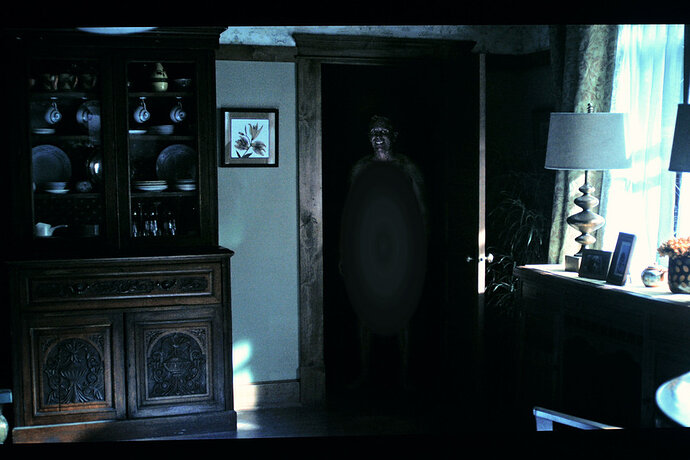First of all, I was not sure about where to post this. After reading all the “abaut the…”-intros in all topics. Please forgive me if you (mods) would like to see it elsewhere.
The background of my posting are some discussions with (mainly) @KCX , @crazydave80, @TeknoJunky, @RosaVanWinkle, and some other guys in different threads at this forum.
E.g.:
as well as here:
Just a few words in short:
I recently requested a feature that allows Plex to play dual-layer Dolby Vision (also known as profile 7 DV). Some of the guys mentioned above assumed that even if Plex is willing to support dual-layer DV it would probably not work since the respective device must(!) also support dual-layer DV.
In case of the Nvidia Shield 2019 @crazydave80 stated that he got the information from Nvidia that the Shield does not support dual-layer DV.
The main reason why I requested dual-layer DV was because only one single tool is able to make single-layer DV from UHDs (DVDFab). Unfortunatelly, there some serious hints (wrong color space and static metadata) that the single-layer DV from DVDFab is somekind of ‘bogus’ single-layer and thus it seems to be senseless that Plex supports single-layer at all.
Please read details about this issue in the request thread (see above)!
So from the current status is that single-layer DV (what can only made a single high-priced tool) is fake and therefore it seems to be senseless that Plex supports it. However, there is currently a minimum change that we get dual-layer support (for the Nvidia Shield) because itself does not support it.
However, @KCX and me had a long disccusion and we assumed that the single-layer DV made by DVDFab looks not very different compared to dual-layer DV mp4s or the original UHD material.
So even if this single-layer DV is fake, it seems to look not very different…
If this is correct, then the guys from DVDFab found a way to get their single-layer DV look like “real” DV or the guys who suggested that is fake are wrong.
@KCX did some testing, yesterday: Dolby Vision not working on 7.24 with single layer mp4 files - #159 by KCX
He used Dolby Vision material from some demo videos.
These results look very interesting as I (personally) see no difference between dual-layer DV and single-layer DV (made by DVDFab).
thats impressive and made me also do some testing.
Here are some results:
Basically, it is important to use a standardized setup with the same lighting conditions etc. For the present investigation I used the following setup:
Camera: Nikon D800
Lens: Nikon AF-S Nikkor 14-22mm 1:2.8G ED
Focal distance: 24mm (static)
Iso: 800 (static)
aperture: f/2.8 (static)
shutter: 1/4 (static)
TV: Panasonic GZ200 (in Germany it is called “GZW2004”)
Player: Nvidia Shield TV Pro 2019
Dark room with no extra light.
As you may see, I did not cange (‘static’) some of the values to ensure that perceptual differences in e.g., lighting do not arise from different camera modes.
I tried different shutter levels and came up with 1/4 sec because it (the resulting picture on my computer screen) look most similar to the picture on the TV screen.
Chosen scene was from the movie Hereditary. There are some very contrasting scenes with respect to lighting and color.
Materials:
- Single-layer: DVDFab
- Dual-layer: DVDFab
- UHD DV (direct played from a UHD player): UHD
- Regular HDR10
- FullHD: Blu-Ray (no DV)
I did not use Plax, as it cannot play dual-layer or UHDs. I used the native player from my TV (or the UHD player).
Full HD (1080p) - no HDR/DV
HDR10:
UHD DV
Dual-Layer DV:
Single-Layer DV (from DVDFab):
I will upload more results later this day.
As you might see, there a certain differences between FullHD (that was clear), HDR and DV.
I (personally) see no strong differences between dual-layer DV, UHD DV and single-layer DV from DVDFab.
Relating to single-layer DV from DVDFab, there are, however, some marginal differences in the coloration…
I will post some other caputes later that have some very small differences relating to dual-layer and single-layer.
One more thing:
The fact that the SL DV from DVDFab is slightly different with respect to the coloration may result from a) the TV’s DV mode in general or b) the discussed point that this SL DV is a wrong color space
EDIT:
The pictures are now censored and I hope that it is now ok and is not violating any forum rules. To all mods, please tell me if you see any problems.







 Good comparison and as you can see there are differences. we will also be able to discuss a lot. ps. I have no problem seeing a half naked man
Good comparison and as you can see there are differences. we will also be able to discuss a lot. ps. I have no problem seeing a half naked man 



